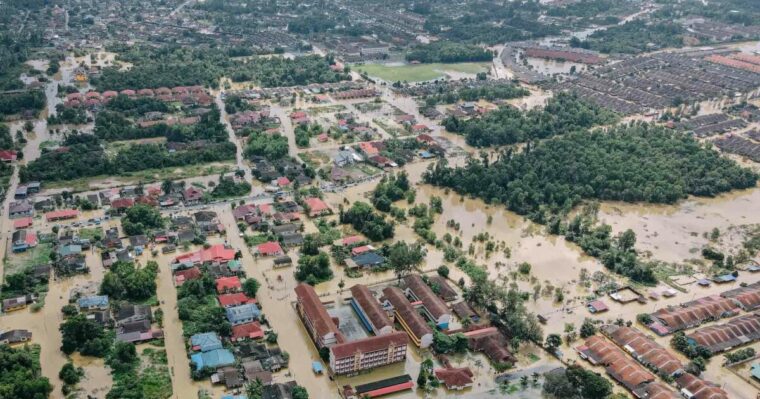
The Federal Emergency Management Agency (FEMA) has issued a Final Rule that provides a flexible framework designed to protect structures against damage and casualties from flooding. The Federal Flood Risk Management Standard (FFRMS) applies to FEMA-funded projects that involve new construction, significant improvements or repairs to substantial damage.
In recent years, recurring floods have endangered lives and property, and as climate change continues to accelerate, historical-data-based approaches have become outdated. The FFRMS is informed by the best available science to improve FEMA’s standards by incorporating both current and future flood risks.
This makes taxpayer-funded projects significantly more flood-resilient, protects federal investments and reduces the risk of flood-related damage and loss. FEMA also will cover the applicable federal cost share for implementing the FFRMS, which is often 75% or more.
“The human and economic cost of flooding is devastating and will only grow in the years ahead as the impacts of climate change grow more intense and reach more communities,” Homeland Security Secretary Alejandro N. Mayorkas said. “Taking forward-looking, effective steps to increase resilience before disaster strikes will save lives, property, critical infrastructure and taxpayer money. The Federal Flood Risk Management Standard ensures that FEMA-funded projects meet that mandate.”
FFRMS also applies to Hazard Mitigation Assistance projects, including structure elevation, dry floodproofing and mitigation reconstruction. This aligns with last year’s National Climate Resilience Framework goal of creating a climate-resilient nation.
“Climate change has exacerbated flood risk across the country, especially when it comes to sea-level rise. The Biden-Harris Administration is taking action to address these heightened risks by getting this new standard over the finish line,” FEMA Administrator Deanne Criswell said. “FFRMS will allow us to enhance resilience in floodprone communities by taking future flood risk into consideration when we rebuild structures post-disaster. This is a huge win that will also allow us to end the repeat loss cycles that stem from flooding and increase the safety of families and save taxpayer dollars.”
The finalization of the rule complements additional measures announced earlier this month to protect workers and communities from extreme weather. FEMA recently allocated $1 billion for 656 projects nationwide to help communities safeguard against disasters and natural hazards, including extreme heat, storms and flooding.
With climate change and other threats raising flood risk across much of the United States, the FFRMS enables FEMA to use climate science to improve the resilience of projects and communities against worsening flood conditions caused by sea-level rise and other environmental changes.
“By using common-sense solutions like elevating or floodproofing critical infrastructure, today’s rule will help local communities harness the best in science and engineering to better prepare for flood risks from rising sea levels and damaging storms,” National Climate Advisor Ali Zaidi said.
Before the FFRMS, FEMA required noncritical projects to be protected against 1% annual chance (100-year) floods to minimize risk. Critical projects, such as fire and police stations, hospitals and facilities storing hazardous materials, needed protection against a 0.2% annual chance (500-year) flood. This standard only accounted for current flood risk.
The FFRMS will raise the required flood elevation and expand the floodplain to account for both current and future flood risks for actions subject to the standard, which mandates integrating flood resilience measures into project designs, slightly raising initial project costs. However, this modest increase in cost is anticipated to yield substantial long-term savings by preventing flood damage.
FEMA covers the expenses of implementing the FFRMS at the project’s applicable cost share, typically 75% or more. FEMA’s findings indicate that incorporating 2 feet of elevation into the design of a new building generally increases the total project cost by just 1.91%.
FEMA began implementing parts of the FFRMS in 2021. This partial implementation used existing regulations to reduce risks by raising minimum flood elevation requirements for structures in areas already covered by flood-risk minimization requirements.
The main differences between partial and full implementation include enlarging the floodplain to account for both present and future flood risks and mandating consideration of natural features and nature-based solutions. Incorporating these can help maintain the advantages of floodplains nationwide, such as their capacity to store and channel floodwaters and foster fertile soils.
The Final Rule will take effect Sept. 9.
Photo courtesy of the City of Virginia Beach
The post FEMA finalizes federal flood risk management standard appeared first on Government Market News.
